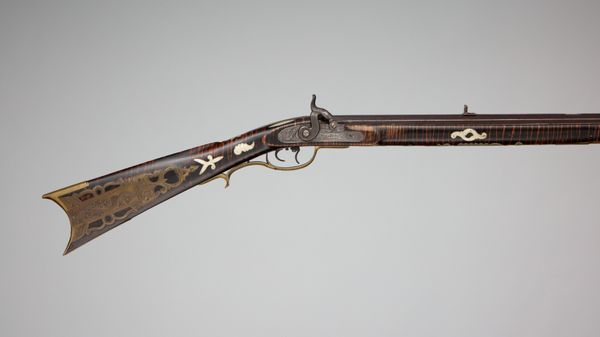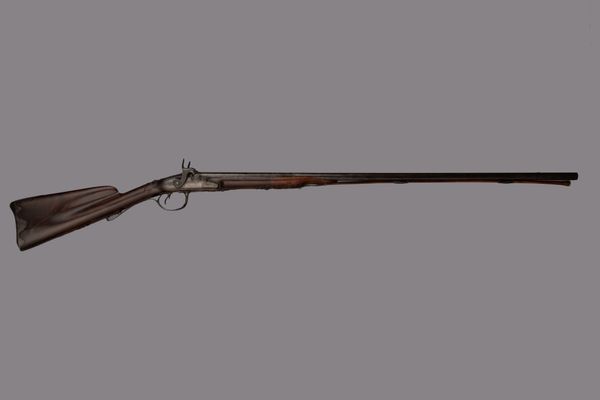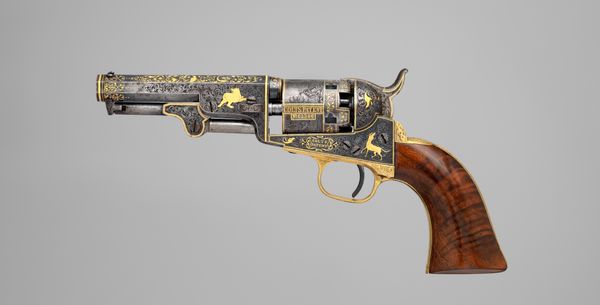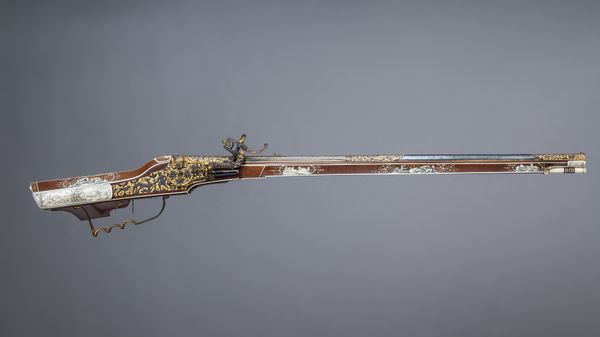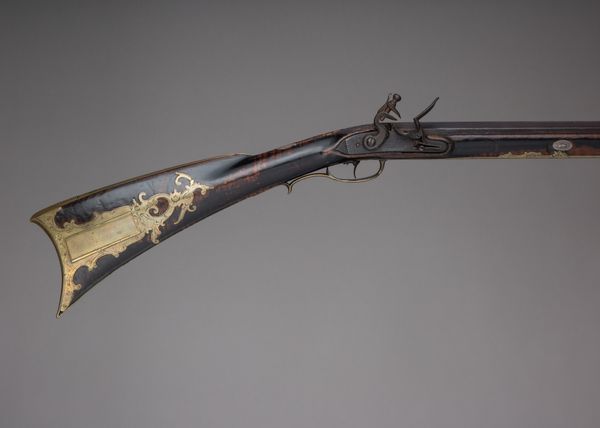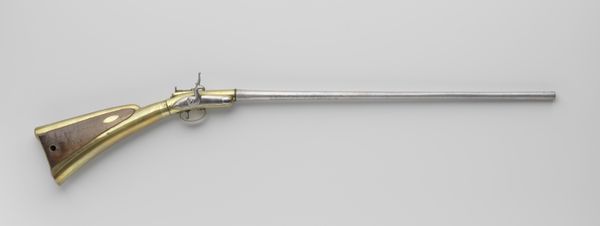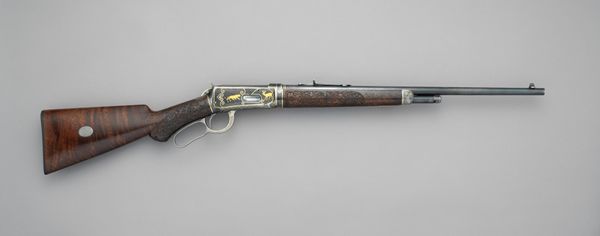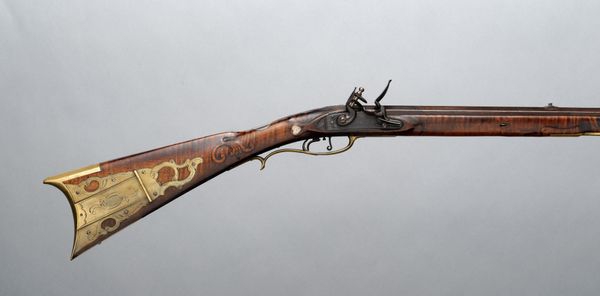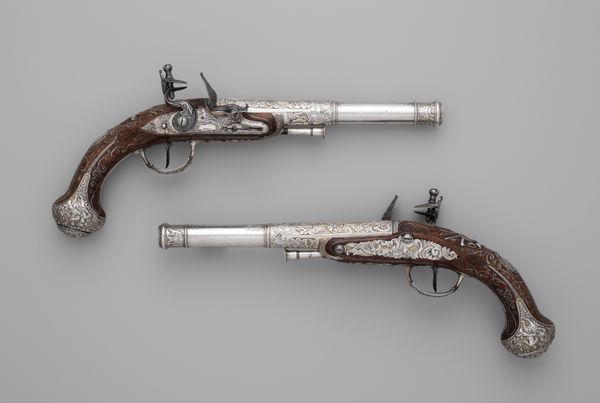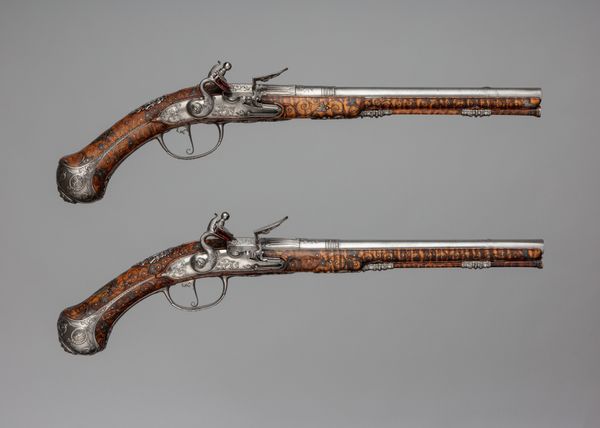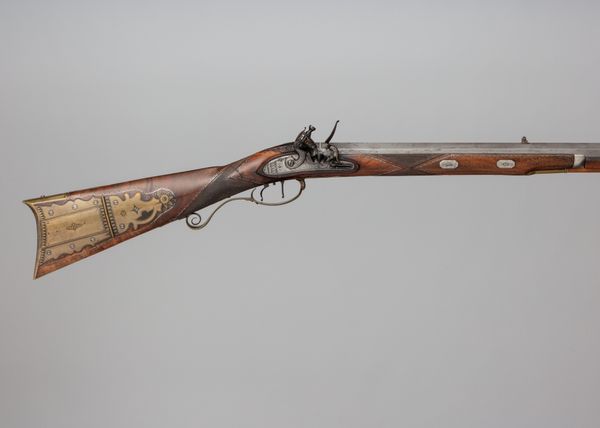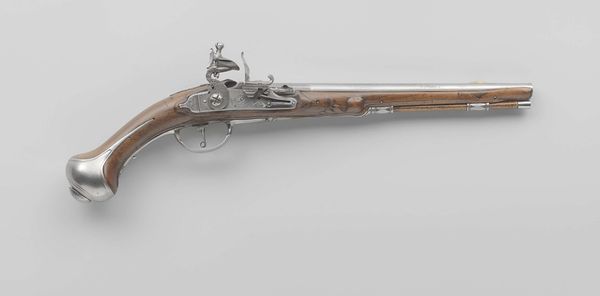
Winchester Model 1895 Takedown Rifle (serial no. 81851) 1913
0:00
0:00
metal, sculpture, wood
#
metal
#
sculpture
#
sculpture
#
united-states
#
wood
Dimensions: L. 44 7/16 in. (112.9 cm); L. of barrel 22 13/16 in. (57.9 cm); Cal. .41 in. (10.45 mm) [.405]; Wt. 9 lb. 9.6 oz. (4354 g)
Copyright: Public Domain
Curator: At first glance, the Winchester Model 1895 Takedown Rifle projects a strange duality— elegance mixed with brute force. There’s something inherently unsettling about its streamlined design. Editor: Indeed. Here we have an object that embodies a critical juncture in American history, crafted in 1913 by the Winchester Repeating Arms Company. What’s remarkable is its transformation from a purely functional instrument into a luxurious commodity, reflecting the social stratification of the time. Curator: I'm immediately struck by the ornamentation: those stylized animal motifs inlaid in gold or brass, aren't they? Against the cool steel of the weapon, this juxtaposition creates visual tension, softening and, strangely, enhancing the firearm’s implicit power. Editor: Consider the cultural context of hunting and masculinity interwoven with the frontier myth. The rifle becomes an extension of power, its design a conscious appeal to a consumer base invested in maintaining particular gendered and racial hierarchies. Note that this is no ordinary rifle; its enhanced materials—wood and metal, transformed into art—speak to the owner's status. Curator: Formally, the rifle's linearity directs the eye along its length, leading towards that fatal opening, the barrel’s mouth. This deliberate aesthetic guides the observer to contemplate the power held within the device. I wonder, could you say something about the philosophy of American arms production? Editor: In that era, advancements in technology, mass production, and market reach made weapons like this widely accessible, and that impacted both social and international relations. Such industrial growth facilitated an expanding economy and, inevitably, global conflicts. Also consider the role women played; although not traditionally seen wielding these arms, many women worked in arms production factories during times of conflict, thus challenging these gendered narratives. Curator: This analysis really enriches how we view this object. Initially, I was captivated by its lines, its balance of light and shadow, the simplicity of function transformed into something disturbingly beautiful. I realize now, it’s more than design— it embodies layers of social meaning. Editor: Precisely, moving beyond mere aesthetic assessment reveals these artifacts as active participants in the narratives that shape our world. They are reminders of how deeply intertwined our cultural narratives are, with weapons as objects of both utility and symbolism.
Comments
No comments
Be the first to comment and join the conversation on the ultimate creative platform.
